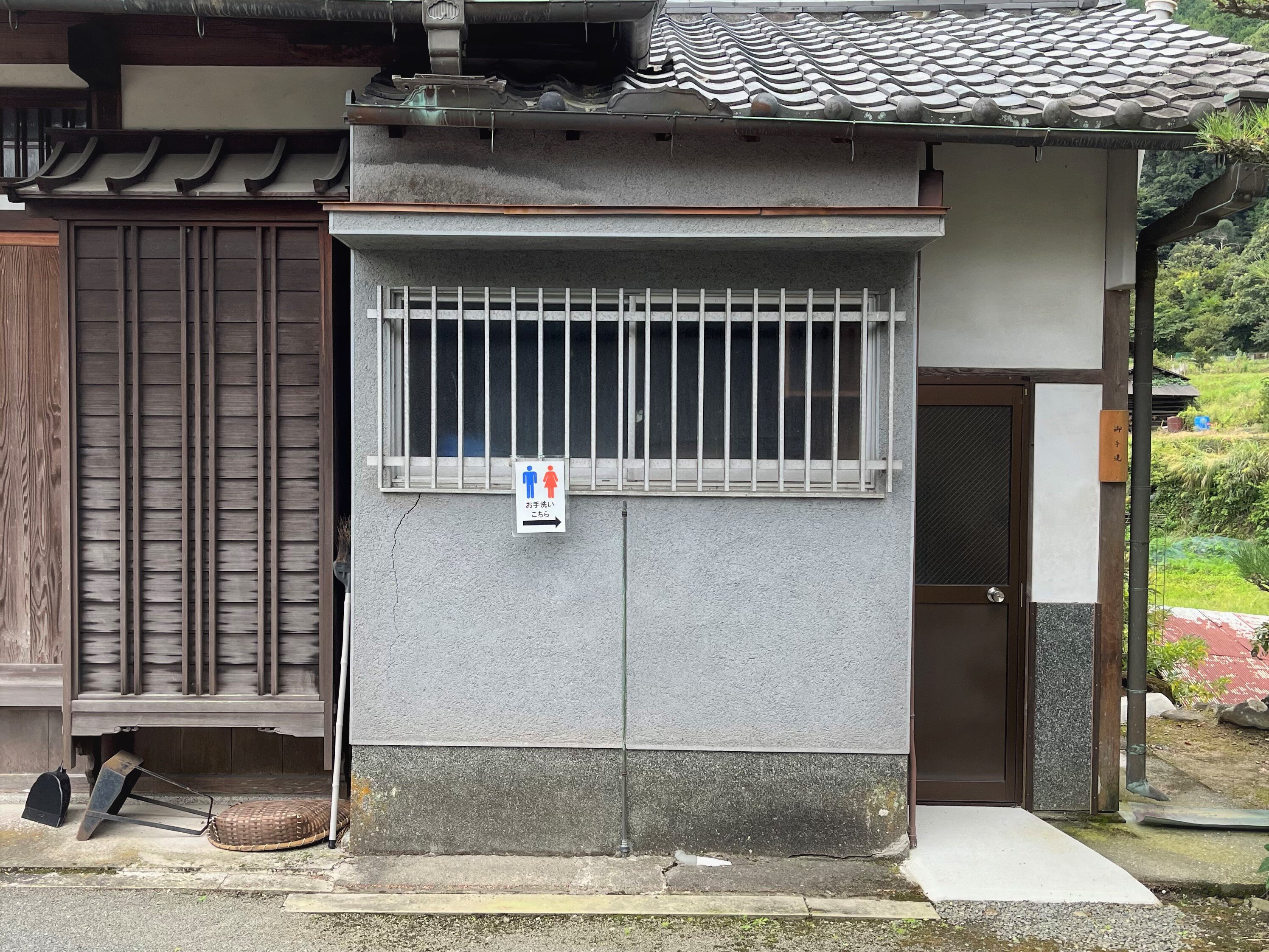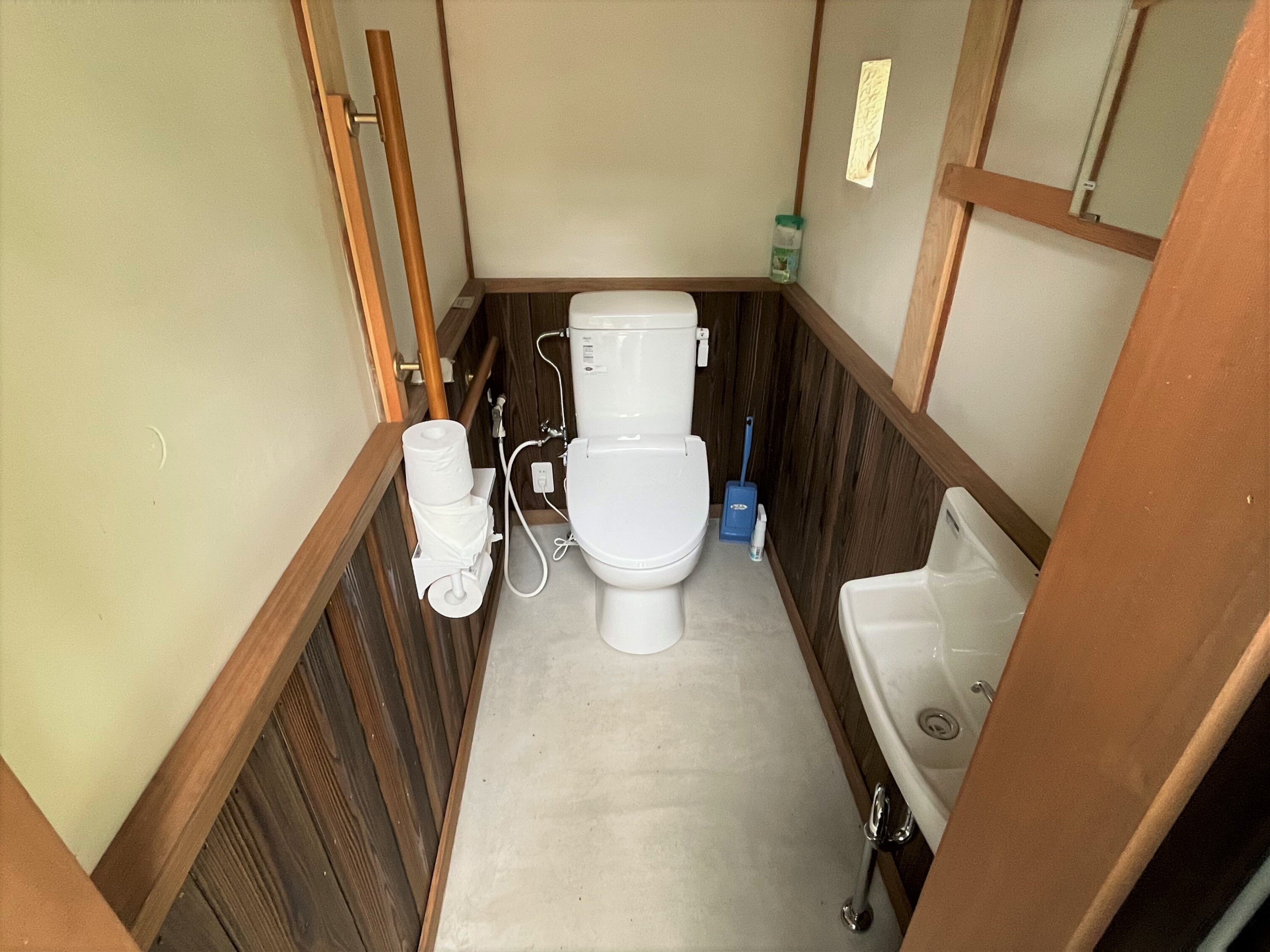2022.10.17
In order to improve your experience of visiting the Japanese heritage "Hinenosho", we have built brand new restrooms in the following locations.
Please use it when you visit the constituent cultural heritage of Japanese heritage.
| The location of the restrooms | Detailed address |
|---|---|
| The Former Residence of the Mukai Family | Tsuchimaru 904, Izumisano, Osaka, 598-0022 |
| Naka-ogi Neighborhood Assocaiation Hall | Ogi 389, Izumisano, Osaka, 598-0023 |
・Outside restroom of Former Residence of the Mukai Family
From the parking lot of the Former Residence of the Mukai Family to the entrance is a pure wooden building, where is the restroom. In order to let everyone know that this is a restroom, we put restroom signs at the entrance and exit. There are no steps in the restroom, so wheelchair users can easily use it. The restroom has a solid wood interior, and there are two western toilets and a separate sink.
※ Please visit the Former Residence of the Mukai Family before you using the restroom. You need to apply one week in advance for the tour. Clik here for details.
【Former Residence of the Mukai Family】

The Former Residence of the Mukai Family was once located at the Kamino-go Town Hall, but came to its present home in Tsuchimaru following relocation during the construction of the Kansai Shin-kuko Renraku Road. The thatched-roof residence had all its additions removed and was restored to its original layout. Once a private residence, it's an excellent example of the unique farmhouses of the Sennan area. Laid out in in four chambers with a partially-disconnected dirt-floor kitchen, the house is notable for the presence of an extra beam between the sashikamoi-style lintel and the main ridge beam. In 1993, the residence was registered as a Municipal Cultural Property by Izumisano City.
・Restroom of Naka-ogi Neighborhood Assocaiation Hall
The Naka-ogi Neighborhood Assocaiation Hall has a silver door, and in the aisle between the door and the Naka-ogi Neighborhood Assocaiation Hall, we built a new toilet. The interior is simple and white, in harmony with the atmosphere of the exterior wall of the toilet.
【Ogi Area】
The Hinenosho Ogi Area is rich with the nature of the Izumi Mountain Range and has agricultural land and settlements thattake advantage of the unique basin-like formations between the mountains. Hinenosho's Iriyamada Village used to be locatedin this area, and the conditions of the village at that time are described in the Masamoto-ko Tabihikitsuke, a diary written byKujo Masamoto, in detail. Ogi has inherited many features of Hinenosho, including shrines, temples and other components suchas a watercourse and ponds, which have been designated as the Historical Remains of Hinenosho (National Historic Sites).
Awater channel network created by a water use system based on an organic linkage of pond-fed irrigation and river-fedirrigation surrounds small plots of rice paddies to create a landscape of terraced paddy fi elds. Paintings and other materialsfrom the Edo period (1603-1868) demonstrate that land use in the area has been mostly unchanged since then. The rurallandscape of Hinenosho Ogi has gained recognition as a rural cultural landscape that has been inherited from the days ofHinenosho and has evolved gradually from the early modern to modern periods. It was selected as Osaka Prefecture's fi rstNational Important Cultural Landscape in 2013.
In addition, we also built brand new restrooms in the following locations in 2021.
| The location of the restroom | Detailed address |
|---|---|
| Hibashiri Jinja Shrine | Ogi 1533, Izumisano, Osaka, 598-0023 |
・Restroom of Hibashiri Jinja Shrine

|
 |
After passing through the main gate of the shrine, you can see the office on the left. The visitor's restroom is just down the hall from the office.
Signs for toilets are placed on the outer wall of the restroom, and wooden signs reading "御手洗(Otearai)" are placed on the door, which is in harmony with the overall atmosphere of the shrine.
There are no steps in the restroom, so wheelchair users can easily use it.
【Hibashiri Jinja Shrine】
During the time when Kujo Masamotoresided in Hinenosho, this was the shrine forthe four settlements constituting IriyamadaVillage (Funabuchi, Shobu, Ogi andTsuchimaru), and it was also known by thenames "Taki Daimyojin Shrine", "TakinomiyaShrine" and "Takimiya Shrine."
Standing on the left of its inner shrine,the inner shrine of Miyuki Jinja Shrine, a sessha (auxiliary shrine) of Hibashiri Jinja Shrine, has also been designated as aNational Important Cultural Property.






